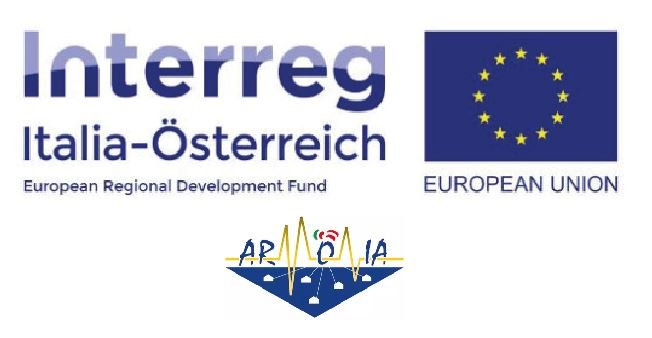ARMONIA: Harmonising administration and public institutions for trans-frontier risk prevention and disaster management.
Funded by the Interreg V-A – Italy-Austria 2014-2020 (European Regional Development Fund)
Project Team: Univ.-Prof. Dr. Michael Strasser and Dr. Jasper Moernaut
PhD Student: Patrick Oswald
Project partners: Lead: OGS Trieste, Partner: University of Udine, University of Trieste, Civil Protection Department of Friuli Venezia Giulia, Civil Protection Department of region Veneto, ZAMG-Austria and the University of Innsbruck

The Sedimentary Geology research group of the University of Innsbruck participates in work package 5: Analysis of motion parameters and their relation to damage and environmental effects developing a database containing evidences of the region’s strong earthquakes of the past 10 ka:
In Alpine environments, strong earthquake not only damage human buildings, but also cause landslides, rockfalls etc., which can harm important infrastructure and its functionality. The investigation area, especially Tyrol and Carinthia/Friuli region, was affected by strong earthquakes in historic time and it is considered to be spatially vulnerable. Earthquake induced landslides, rockfalls, and other rapid environmental changes leave traces with a particular fingerprint in the sedimentary infill of Alpine lakes. Investigating these earthquake induced traces in the sediment records of several lakes in the study area will allow us to date and analyse possible earthquakes since the glacial retreatment of the specific areas. Effects and particular fingerprints of earthquakes in the individual lacustrine systems are calibrated with the historic event record of the past 1000 years in close collaboration with Christa Hammerl of the Central Institute for Meteorology and Geodynamics (ZAMG).
Knowledge of intensity and recurrence rate of strong earthquakes and their effects on humans and environment is fundamental for planning the mitigation of earthquake damages and protection of the population in the future.
Project Collaborators:
Project members from the Sedimentary Geology group:
PhD students: Patrick Oswald, Christoph Daxer
Project partners and PhD supervisors: Univ.-Prof. Dr. Michael Strasser and Dr. Jasper Moernaut
Collaborators within Univ. Innsbruck:
Univ.-Prof. Dr. Christoph Adams
Collaborators within Austria (ZAMG):
Dr. Wolfgang Lenhard, Dr. Christa Hammerl, Dr. Stefan Weginger,
